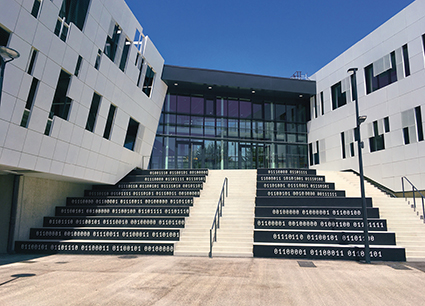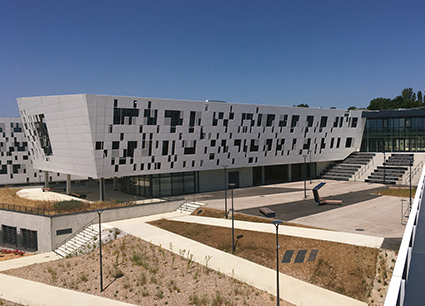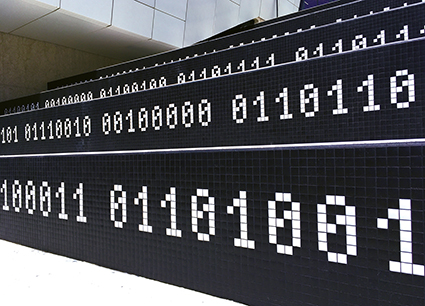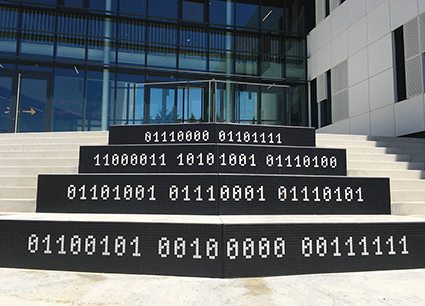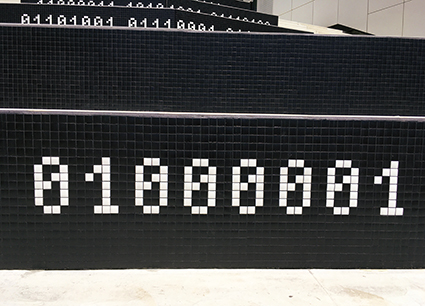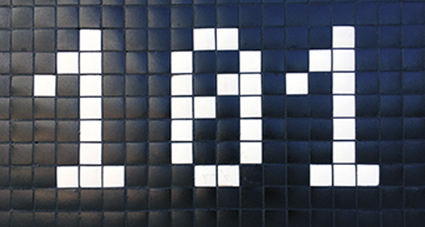Ada-1%
Permanent installation for a Hight School building “Simone de Beauvoir”, Gragnagne, near Toulouse, south of France, 2022.
Dimensions: 47m
Material: glass mosaic
Artistic design: Magali Desbazeille
Project management: Olivia Sappey, bOssa
Simulation: Olivier Glon
Construction: Atelier NI
Graphism: Axel Durand
Commission from the Occitanie Gerion
Architectes: Atelier méridional Joel Nissou et Atelier d’architecture Malisan
À propos d’Ada Lovelace et des femmes dans le numérique…
Description
The work Ada questions language in its societal and intimate, political and poetic dimensions. The use of writing, of words, of letters, is at work in the place of transmission of knowledge that is a high school. The place of academic writing is at the heart of teaching, and digital writing is at the heart of the practices of today’s high school students.
The generation of high school students born after the year 2000 has a relationship with the written word unlike any generation before it. While we might question the quality of their writing, this is a generation that, quantitatively speaking, produces more writing than any other. Word invention, collage, abbreviation, fragmentation and decoding are at the heart of their communication.
The work pays homage to Ada Lovelace (1815-1852), a pioneer of computer science. An English mathematician who died aged 36, Ada Lovelace conceived the first program to be executed by a machine in 1843. As such, she is considered history’s first female programmer and inventor of the first algorithm. Ada Lovelace anticipated computer science, computers and neuroscience. What she evokes in her poetic science notes are the seeds of artificial intelligence, at the heart of our contemporary societal evolution. She wanted calculators to be able to program music, painting and poetry, thus becoming partners of the imagination.
The text, in binary code 0 and 1, is an extract from Ada Lovelace’s quote: “If you can’t give me poetry, can’t you give me poetic science?
The choice of this extract raises questions about the relationship between science and art, and about the very nature of poetry.
